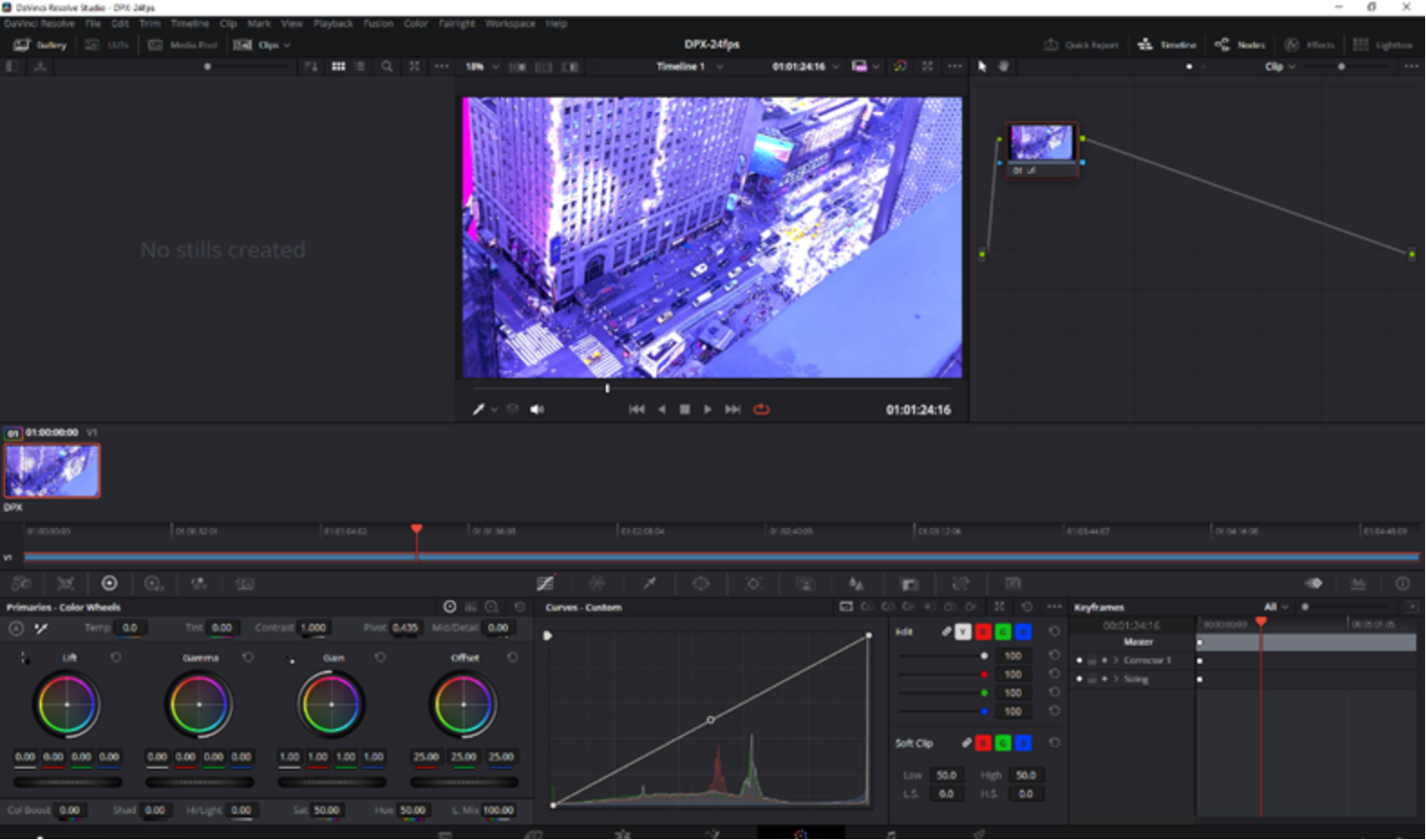Home > Storage > PowerScale (Isilon) > Industry Solutions and Verticals > Media and Entertainment > Video Edit in the Cloud with Dell APEX File Storage for AWS > Uncompressed image sequence playback
Uncompressed image sequence playback
-
Image sequences are a common video format used in color correction and VFX workflows. Image sequences express each frame of video as an individual file. These frames may be uncompressed (such as DPX or TIFF), or the frames may be compressed (such as OpenEXR). Technically, there are both compressed and uncompressed versions of OpenEXR, but most OpenEXR uses lossless PIZ compression. For the testing in this paper, uncompressed DPX image sequences were created. These DPX sequences were 16-bit color, UHD resolution, at 24 frames per second. Each frame was approximately 50MB. To sustain playback requires 1.2GBps per image sequence.
The same 12x virtual workstations used in the compressed video test were used for this uncompressed video playback test. DaVinci Resolve is a common application used in color correction workflows and was used for the playback. Once again, the 12x workstations were manually pointed to nodes in the APEX File Storage cluster, with 2x workstations per node.
With this setup, the cluster could sustain 2x image sequences per node or 12x total image sequences. That is 2.4GBps per node or 14.4GBps aggregate for the cluster.
The OneFS file system running in APEX File Storage can do filename-based prefetch. This data access strategy is designed for image sequence playback. Filename based prefetch can yield significant benefits for image sequence playback with on-premises PowerScale storage. For APEX File Storage, file name-based prefetch is not recommended. These results were obtained with default file layout and access strategies.

Figure 6. DaVinci Resolve
Uncompressed video playback from APEX File Storage for AWS
- Node type: m5dn.24x large
- Node count: 6 nodes
- EBS type: gp3, 1000MiB/s, 8000 IOPs
- Volumes per Node: 12
- Virtual Workstations: g5.8xlarge (Windows Datacenter 2019, SMB protocol)
- Playback application: DaVinci Resolve
- Uncompressed video type: DPX image sequence, 16-bit color, UHD resolution, 24 frames per second, 50MB frame: 1.2GBps per image sequence
- Aggregate image sequences: 12
- Bandwidth per node: ~2.4 GBps
- Cluster aggregate throughput: ~14GBps

Figure 7. OneFS statistics output of uncompressed video playback
